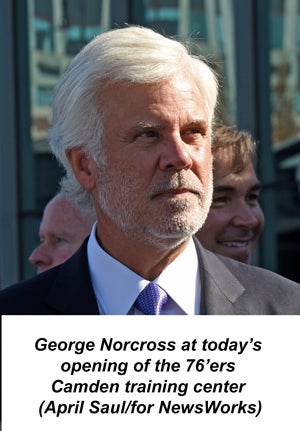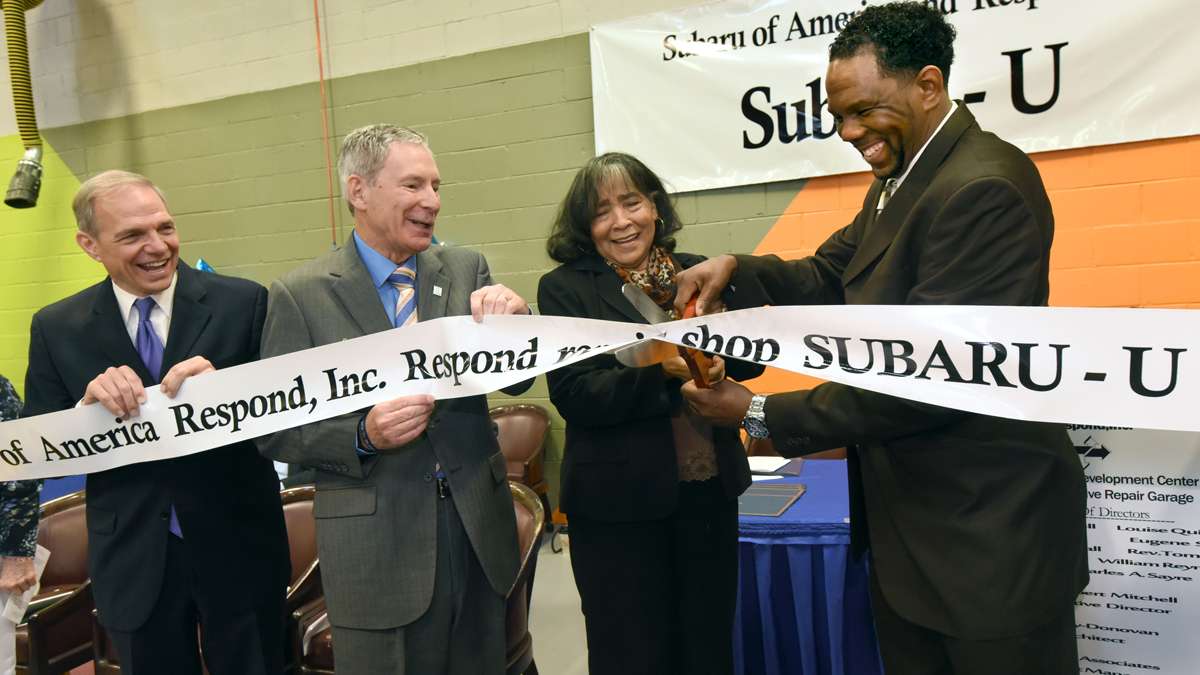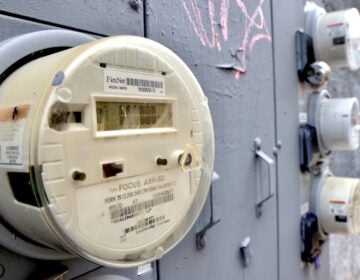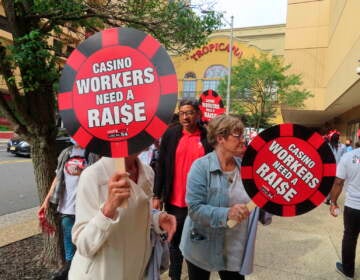As companies rush to Camden, are residents left behind?
Armed with an $82 million tax break from the state of New Jersey, the Philadelphia 76ers celebrated the opening of the team’s new multimillion-dollar practice facility in Camden Friday.
Last month, ACTEGA North America and Dubell Lumber became the 19th and 20th company to receive a share of the record-breaking $1.2 billion in tax incentives to come to Camden — arguably the poorest, most dangerous city in America.
But despite the historic tax breaks — awarded since December 2013 to corporations seeking to either move to or expand in Camden under New Jersey’s Economic Opportunity Act, the city is apparently not negotiating Community Benefits Agreements to insure that these corporations give back to the city and its residents.
CBAs, used in the U.S. since the late 1990s, are legally binding contracts, normally completed before a corporation comes to a city, after negotiations involving city leaders, company representatives and residents.
In a May interview, Camden Mayor Dana Redd said her administration was negotiating CBAs with all the companies receiving tax breaks.
“We are requesting,” she said, “local hires in both the construction and the temporary and the permanent jobs being created once the companies officially open.”
Redd said local sourcing and educational opportunities are also on the table. She declined to show documentation, saying all the CBAs were “in deliberation mode.”
“We’ve been negotiating all along,” she said. “We didn’t just start.”
Representatives of Holtec International, Subaru of America, American Water, Contemporary Graphics and Volunteers of America — which between them, account for roughly half the state money awarded thus far — said they have not been asked by the city to sign CBAs, though some have worked on less formal plans; all say they have taken initiatives to help the community.
Redd declined a request for a follow-up interview.
CORD (Community Organized for Responsible Development) is a coalition of community stakeholders, nonprofits, and Camden residents that plans to meet with the corporations to ask them to sign CBAs. The contracts could require the companies to give priority hiring to residents; make an effort to buy from local businesses; and contribute to a fund that would help the entire city.
If a particular company has no jobs for residents, it would be asked to put money into the fund to help them find work elsewhere.
“If you’re going to deploy such a monumental tax-incentive program for the city,” said CORD member Ray Lamboy, “you really should begin to resolve the major issues that are inhibiting the city’s revitalization — like multigenerational poverty, chronic unemployment, and a decimated tax base.”
Jon Whiten, vice president of New Jersey Policy Perspective, said he wishes the legislation had mandated that the companies receiving these giant windfalls signed CBAs.
“If they were going to be so generous with these corporations,” said Whiten, “they should have built in some well-thought out mechanism to insure that these tax breaks should better benefit the community.”
 The Economic Opportunity Act was championed by then-state senator and now U.S. Rep. Donald Norcross as a way to help impoverished N.J. cities. His brother, powerful New Jersey Democrat George E. Norcross, serves on the board of Holtec and is chairman of the board of trustees of Cooper Health System and Cooper University Hospital. Cooper was awarded $40 million in tax breaks to move 350 office jobs from nearby suburbs to Camden.
The Economic Opportunity Act was championed by then-state senator and now U.S. Rep. Donald Norcross as a way to help impoverished N.J. cities. His brother, powerful New Jersey Democrat George E. Norcross, serves on the board of Holtec and is chairman of the board of trustees of Cooper Health System and Cooper University Hospital. Cooper was awarded $40 million in tax breaks to move 350 office jobs from nearby suburbs to Camden.
In 2015, a delegation from Camden Churches Organized for People — that would eventually become CORD — met with Redd to ask for her cooperation in pursuing CBAs.
“Normally with CBAs,” says CORD member Sean Brown, “it’s city hall, the corporations and the community all working together.”
According to Lamboy, who attended the meeting, “the mayor said, ‘I got this, I represent the community,’ and she hasn’t returned our phone calls since.”
When the issue was raised at a Camden City Council meeting in March, Council President Frank Moran said, “If we’re going to depend on the outsiders coming in to make our city better, then we’ll get what we deserve.”
The same night, Councilman Brian Coleman said he had asked the city attorney, Marc Riondino, to show him CBAs. Coleman said that, instead of contracts, he was given a handful of letters addressed to the mayor in which corporate representatives expressed their eagerness to help the city.
“Is he kidding?” Coleman said.
New Jersey’s current program using taxpayer dollars to lure companies to impoverished areas began in 2013 when the Legislature created the Grow New Jersey fund.
The credits for the Grow New Jersey companies are spread over a 10-year period and are conditional upon the companies staying in Camden for at least 15 years.
Backers of the program say you need a big giveaway to get companies to even consider coming to Camden.
At a June panel discussion about economics in Camden, Jacqueline Buhn, CEO of real estate company AthenianRazak, described telling companies about the tax credits offered to come to Camden.
“The usual response,” said Buhn, is, ‘Camden? No way! Wait … how much money?'”
At that discussion, Anthony Perno, the CEO of Cooper’s Ferry Partnership, stressed the difficulty of convincing the companies to come to a city still considered among the poorest, most violent in the nation, even with the huge tax breaks connected with the moves.
“If we don’t think that perception facing the city of Camden is a real problem,” said Perno, “we’re all kidding ourselves.” The economic incentives, he said, “are what is necessary to convince corporate leaders to come here and just look at us … I have companies still to this day who will say, ‘Yeah, I think it makes sense, I hear what you’re saying, but my employees will never forgive me for moving and I need my employees.'”
Activists are frustrated not only that corporations were not asked to commit to CBAs, but that in a city where roughly 8 percent of residents are college graduates and unemployment stands at 10 to 14 percent, some of the companies have few entry-level jobs.
“Why aren’t they going out there and recruiting companies that have jobs for our residents?” Lamboy said of city officials. “If we could get 5,000 entry-level jobs with a living wage, I believe you’d start to see a change in Camden. People would have money in their pocket and take their wife and kids out to dinner, and buy shoes on Haddon Avenue and flowers on Federal Street.”
Some corporate representatives and city officials declined requests to be interviewed for this story.
The metal recycling company EMR Eastern is receiving nearly $253 million to move its American headquarters seven miles from Bellmawr to South Camden, where it already has a scrap yard. According to New Jersey Spotlight, its $728,386 cost for each of the 285 new jobs promised and the 62 jobs the company is preserving that executives there say otherwise may have been moved to New Orleans makes it the most expensive per-employee incentive in state history.
A company representative took several messages but when asked if anyone planned to return the calls, answered, “No comment.”
The Philadelphia 76ers were willing to discuss future community initiatives but not to comment on CBAs.
Amy Hever, executive director of the Sixers Youth Foundation and Community Relations, said plans include a conference for Camden basketball coaches, renovations of city basketball courts, and a middle school curriculum that uses basketball to facilitate success. All are in the early stages, she said, with no Camden organizations contacted yet to be partners.
Subaru received $118 million in incentives to move from Cherry Hill to Camden.
At an April ribbon-cutting for a program the company is sponsoring to train local youth to be Subaru mechanics, the company’s manager of corporate responsibility and philanthropy, Sandy Capell, said that to the best of her knowledge, her company had not been asked to sign a CBA, but explained that Subaru has “a culture with the expectation that you always have to do the right thing … the only mistake anybody can make is to do nothing.”
More recently, she declined further comment on community involvement; on its website, however, Subaru states that it has donated more than $800,000 to worthy causes in Camden.
Dr. Wilbert Mitchell, president of the nonprofit Respond, Inc., Subaru’s partner in the North Camden facility they are calling Subaru U, was effusive in his praise of the company at the event.
“I would like to thank Subaru not just for coming to Camden but for moving into the inner city,” he said.
Assemblywoman Patricia Egan remarked, “All I can say to Subaru right now is, ‘Wow! What a way to start being a good neighbor to Camden.'”
At the ribbon-cutting, Subaru President and COO Thomas Doll referred to the “sizable investment” involved in the training program, with a graduating class next year of between 12 and 18 mechanics . He estimated the shiny new automotive equipment at Subaru U to cost as much as $200,000.
Carl Dranoff — who famously transformed Camden’s legendary, crumbling RCA Victor building into luxury lofts — is currently building One Liberty Residential, an apartment building that is part of a huge waterfront development that is also receiving millions in tax breaks from the state’s Economic Development Authority.
“I think,” he said at the June discussion, “that Camden needed a massive infusion of incentives to tip the scales, because small-scale development was not going to transform Camden.”
Some smaller companies already employ more residents than others, receiving millions more in incentives. The VOA, with a roughly $6 million grant, currently has 100 city residents on its payroll.
Contemporary Graphics, which is moving to a Ferry Avenue location from the Pennsauken facility it had outgrown, has entry-level jobs and a policy of promoting temporary workers to permanent positions; 83 of their current 234 positions are filled by Camdenites.
Location is another measure of the potential for positive economic impact. Lamboy fears that employees of the large complexes on the outskirts of the city have little incentive to patronize Camden businesses.
“Holtec, Subaru and the Sixers have self-contained campuses, ” he said. “You could put a gym in there, you could get your dry cleaning picked up from there, you could eat lunch while you’re there.”
Subaru’s headquarters is being erected in the Gateway District off Admiral Wilson Boulevard, near Campbell Soup, and will be surrounded by 1,000 parking spaces.
Rutgers Camden public policy professor Stephen Danley said, “I’d love to see some of these businesses thinking, we don’t want parking spots around our facility, we want to be embedded right in the urban environment … the fact is, that’s all the trend in Philly.”
The massive new Holtec facility is right off the Morgan Boulevard exit on Route 676 and is as easy to access from a major highway as Subaru. Still, Holtec program director Ed Mayer is convinced that it will transform the neighborhood. It’s now a no-man’s land, favored by the homeless, where heroin addicts used to patronize a needle-exchange van on a vacant lot now owned by Holtec. The van was evicted from that location, and is currently on indefinite hiatus, much to the frustration of the health care workers who staffed it.
Mayer believes that the 1,000 employees Holtec plans to have on its payroll by the end of the decade will need gas stations, personal services, and perhaps — if there is redevelopment in the area — even places to live that would enable them to walk to work.
“I could see if we were going to stay at 100 or 200 people, that maybe they could stay in a cocoon … Could you have a thousand people drive to this site every day and leave and not have any giveback to Camden? I don’t think so, I think the area’s naturally going to evolve.
“We want,” said Mayer, “to be a catalyst for change.”
Sean Brown is skeptical.
“For Holtec to have economic output that’s greater than their tax incentives,” said Brown, “that’s a lot of money that people there would have to spend in our own community.”
Camden residents hate the idea of these companies becoming gated communities from the neighborhoods.
At a meeting several months ago between representatives of Liberty Trust and a neighborhood group, resident Gayle Christensen became upset about a planned bus to take people back and forth from the new Camden waterfront developments to downtown.
“Instead of saying, we’re going to offer you a special shuttle service, they could offer to walk them and show them,” said Christensen. “If they spent even an afternoon walking the streets, they’d see it was an irrational fear.”
The buses are anathema to Danley as well.
“One of the biggest challenges Camden faces,” he said, “is racism … it’s not just a story of Camden residents suffering, it’s a story of the rest of the region actively making life more difficult.”
Danley points to the Camden sewage treatment plant that receives waste from throughout the county and is notorious for producing noxious odors in the Waterfront South neighborhood.
“How do we avoid having the same racism creep into development?” he said. “What does it mean when we’re thinking about our suburban commuters and we’re prioritizing their fear?”
Lamboy said companies that do move to Camden should want a more vibrant city.
“At the end of the day,” he said, “when they build up all these castles, they’re gonna be surrounded by moats … and poverty. My goal is to not let that happen.”
April Saul is a Pulitzer Prize-winning photojournalist who lives in Camden. She can be reached at aprilpix@aol.com, and her work chronicling life in Camden can be seen at www.facebook.com/aprilsaulincamden.
WHYY is your source for fact-based, in-depth journalism and information. As a nonprofit organization, we rely on financial support from readers like you. Please give today.













